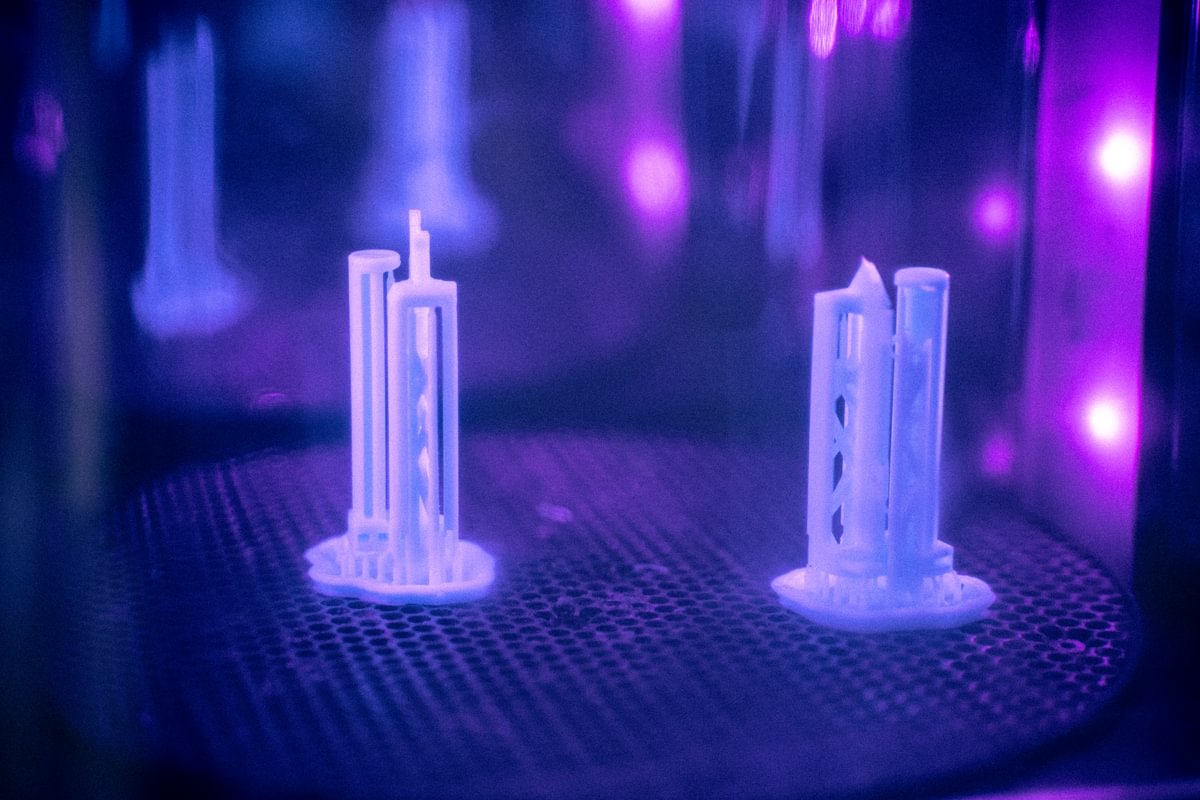Accelerate Your Product Development Timeline
One of the biggest timeline impacts in any development program is getting the product to work. Our engineers and designers utilize our in-house 3D printing tools to design, test, and iterate more rapidly than we could if we outsourced. These fast (sometimes as many as multiple prints per day) turnaround times reduce both cost and overhead. Additionally, because our teams are experienced with 3D printing, we can leverage our strengths to avoid common issues and hurdles that clients may face.

Why Use Rapid Prototyping
The “rapid” in rapid prototyping refers to the key benefit in 3D printing — the time it takes to have a prototype in hand. Because it doesn’t require significant tooling, the lead time to starting fabrication is almost zero. By keeping processes in-house, we cut out delays associated with billing, shipping, and setup by a third-party vendor. Plus, our teams can get up to speed rapidly to work with your team thanks to our deep experience.
Cost
Since there is virtually no tooling cost and reduced labor overhead associated with preparing and executing 3D printing fabrication, our clients save money by choosing this route. By limiting our need to outsource 3D printing, we further reduce costs by cutting out shipping and the profit margin of a third party.
Capability
With 3D printing, we have the ability to create parts and geometries that are impossible to achieve in traditional subtractive or formative manufacturing processes. For example, 3D printed components can be fabricated with undercuts or cavities that a CNC machine wouldn’t be able to reach.
Best Uses
One of the best use cases for 3D printing technologies is prototyping in the design, development, and testing of products — it fits well in our role as a product development, design, and engineering partner. When testing and evaluating the prototypes, we only need a small quantity of the device, so processes intended for large volume aren’t cost effective or timely. It’s empowering to be able to produce a part in a few hours rather than waiting for the CAM setup time on a CNC machine, or tooling production time for molding methods.
Custom or One-Off Parts
Another application in which 3D printing shines is customized, one-off parts, such as parts that are created to match a specific patient’s anatomy. We see this most frequently in dental applications where a custom set of dentures or dental prosthetic needs to be fabricated to fit a patient’s specific mouth and jaw geometry. Surgeons will sometimes design and print custom surgical guides that allow them to guide surgical tools to match patient anatomy. These are applications that would never take advantage of the economies of scale that traditional manufacturing methods afford, so 3D printing is the most efficient use of time and money.
On-Demand Production
Sometimes demand for products is so variable that it doesn’t make sense to set up tolling to produce a large quantity of components — it costs space and money to store parts for a long time. In some cases where the quantity of components needed isn’t too high, on-demand 3D print manufacturing can make sense. This can eliminate longer lead times associated with some traditional manufacturing processes and allow companies to scale their production to their product’s demand.
Types of 3D Printing & When We Use Them
Fused Deposition Modeling
Fused deposition modeling (FDM) is what most people think of when they think of 3D printing — melting and extruding a plastic filament as a part gets built layer by layer. Compared to other methods, this is very cheap and fairly fast, but it has a “3D printed” look with obvious layer lines. We frequently use this for early space-claim/size models, or for early mechanism prototypes when we are trying to dial in the fit of components relative to one another.
Stereolithography
Stereolithography (SLA) is the use of a UV laser to cure liquid resin, a photopolymer, into the solid layers of a part. SLA parts are slower to produce than FDM components but are inexpensive and they can have good dimensional accuracy. High-resolution SLA parts don’t have the “3D printed” look that FDM parts do, so they present as higher quality. We use this for some specific material properties or for small parts that require high dimensional accuracy, but this method has lost popularity over time because of our polyjet capabilities.
Polyjet
Polyjet is a proprietary technology developed by Stratasys. It also uses liquid photopolymer resin, but rather than using a laser to cure the resin, it sprays a layer from a moving printhead, similar to a household inkjet paper printer. It builds layer upon layer until the part is complete. We tend to choose this method over others because it’s very fast and we can print multicolored parts. The dimensional accuracy is very high, and the compoenents don’t have a “3D printed” look like FDM parts. With large components, polyjet can be more expensive, but with small parts this can be negligible, and if we were going to paint the parts, it more than pays off.
Get Started
Leveraging 3D printing in your product development process can be a game-changer, offering you unparalleled speed, cost efficiency, and design flexibility. By working with a team of experts who know the technology inside and out, you can significantly reduce lead times, cut costs associated with traditional manufacturing, and quickly create highly customized components tailored to your needs.
Ready to position yourself at the forefront of innovation?
Let’s connect to talk about how your design and engineering capabilities can support your goals.
